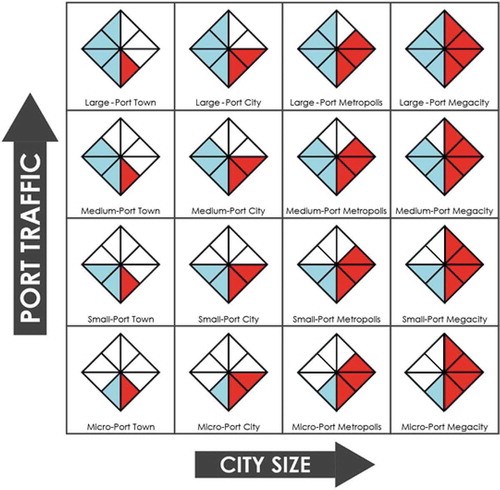CDT SIS PhD researcher and amateur artist Toby Roberts won the People’s Choice award at the Doctoral College Festival of Research Awards on 10th June 2021. The Research Awards and Director’s Awards are part of the Festival of Doctoral Research which recognises and celebrates exceptional achievements and contributions of the University’s postgraduate researchers.
Creative Representations of Research Competition challenged postgraduate researchers to have fun exploring all the different ways in which they can represent and share the essence of their research.
Port-Cites of the Future
This painting depicts a port-city of the future, with some potential solutions to reducing the negative impacts of ports whilst increasing the local benefits. Some examples of this in the painting are renewable energy, green architecture, shore-to-ship power and circular economy (in this case a greenhouse to capture waste CO2 and heat for agriculture).
Toby started painting at the start of his PhD study as a way to relax and he enjoys painting landscapes and seascapes.
Toby’s research work includes creating a new system of classification for port-cities that includes cargo and passenger ships. “Port-cities have a key role in international trade and provide essential services to the local, regional and national economies. Port-cities can boost manufacturing and growth of port-related industries, contributing jobs to the local area. They can also be popular start- and end-points and destinations for tourist activities, such as cruises. The presence of the port may bring additional opportunities in areas such as employment, renewable energy, circular economy, culture and identity.
Establishing sustainable cities and communities is one of the 17 United Nations Sustainable Development Goals (SDGs) (SDG number 11). Port-cities are vitally important to efforts to encourage sustainability. It is therefore important to gain a greater understanding and critical evaluation of port-cities, what their requirements and challenges are, how they differ and how they can be better utilised to produce more benefits and fewer negative impacts. As a strong focus is placed on understanding the environmental impacts of ports and sustainability, a system to effectively group port-cities by their size and potential impacts is needed.
‘The Southampton System’, combines passenger numbers and cargo tonnage on one axis with urban population on another in a 4 × 4 matrix, creating 16 groupings of port-cities. The Southampton System provides an effective and broader method for port-city classification, enabling more effective future study into, and policy recommendations for, port-cities.”
Research Article
The Southampton System: a new universal standard approach for port-city classification
Toby Roberts , Ian Williams & John Preston
Published online for Taylor and Francis: 10 Aug 2020


